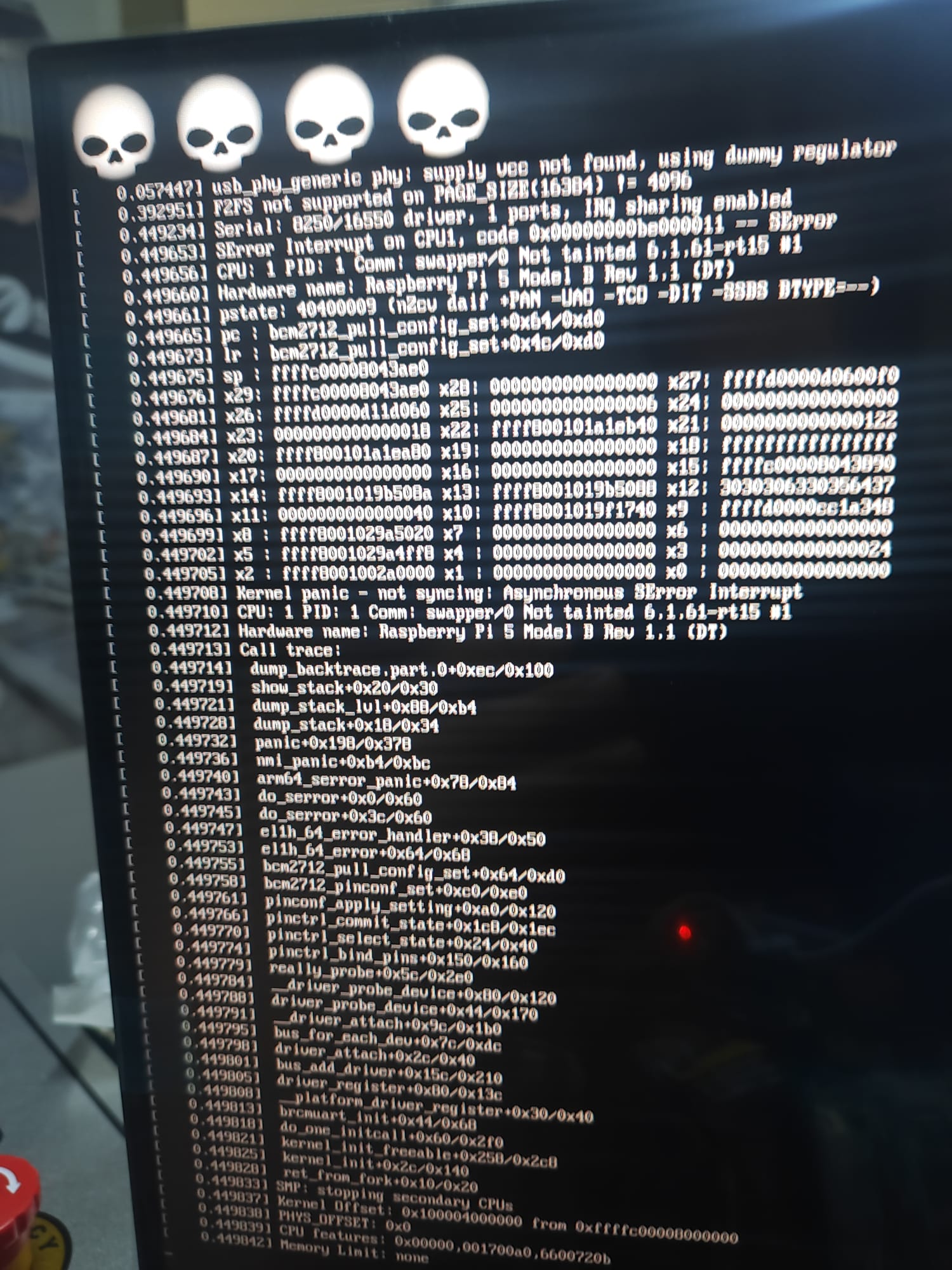Search Results (Searched for: raspberry)
- Cant do this anymore bye all

21 Jan 2025 11:51
Replied by Cant do this anymore bye all on topic Linuxcnc 2.9.2 and 2.93 images for Raspberry Pi 4b & 5
Linuxcnc 2.9.2 and 2.93 images for Raspberry Pi 4b & 5
Category: Installing LinuxCNC
- Moutomation
- Moutomation
21 Jan 2025 11:32
Replied by Moutomation on topic Linuxcnc 2.9.2 and 2.93 images for Raspberry Pi 4b & 5
Linuxcnc 2.9.2 and 2.93 images for Raspberry Pi 4b & 5
Category: Installing LinuxCNC
- rodw

21 Jan 2025 11:29
Replied by rodw on topic Linuxcnc 2.9.2 and 2.93 images for Raspberry Pi 4b & 5
Linuxcnc 2.9.2 and 2.93 images for Raspberry Pi 4b & 5
Category: Installing LinuxCNC
- Cant do this anymore bye all

21 Jan 2025 11:26
Replied by Cant do this anymore bye all on topic LinuxCNC on Raspberry Pi 5
LinuxCNC on Raspberry Pi 5
Category: Installing LinuxCNC
- Moutomation
- Moutomation
21 Jan 2025 11:12 - 21 Jan 2025 11:28
Replied by Moutomation on topic Linuxcnc 2.9.2 and 2.93 images for Raspberry Pi 4b & 5
Linuxcnc 2.9.2 and 2.93 images for Raspberry Pi 4b & 5
Category: Installing LinuxCNC
- Cant do this anymore bye all

21 Jan 2025 10:31
Replied by Cant do this anymore bye all on topic Linuxcnc 2.9.2 and 2.93 images for Raspberry Pi 4b & 5
Linuxcnc 2.9.2 and 2.93 images for Raspberry Pi 4b & 5
Category: Installing LinuxCNC
- PopBang
- PopBang
21 Jan 2025 10:17
Replied by PopBang on topic Linuxcnc 2.9.2 and 2.93 images for Raspberry Pi 4b & 5
Linuxcnc 2.9.2 and 2.93 images for Raspberry Pi 4b & 5
Category: Installing LinuxCNC
- Onat
- Onat
21 Jan 2025 09:41 - 21 Jan 2025 09:41
Replied by Onat on topic LinuxCNC on Raspberry Pi 5
LinuxCNC on Raspberry Pi 5
Category: Installing LinuxCNC
- Cant do this anymore bye all

21 Jan 2025 06:53
Replied by Cant do this anymore bye all on topic Linuxcnc 2.9.2 and 2.93 images for Raspberry Pi 4b & 5
Linuxcnc 2.9.2 and 2.93 images for Raspberry Pi 4b & 5
Category: Installing LinuxCNC
- PopBang
- PopBang
21 Jan 2025 06:47
Replied by PopBang on topic Linuxcnc 2.9.2 and 2.93 images for Raspberry Pi 4b & 5
Linuxcnc 2.9.2 and 2.93 images for Raspberry Pi 4b & 5
Category: Installing LinuxCNC
- Cant do this anymore bye all

21 Jan 2025 06:41
Replied by Cant do this anymore bye all on topic Linuxcnc 2.9.2 and 2.93 images for Raspberry Pi 4b & 5
Linuxcnc 2.9.2 and 2.93 images for Raspberry Pi 4b & 5
Category: Installing LinuxCNC
- Cant do this anymore bye all

21 Jan 2025 06:35
Replied by Cant do this anymore bye all on topic Linuxcnc 2.9.2 and 2.93 images for Raspberry Pi 4b & 5
Linuxcnc 2.9.2 and 2.93 images for Raspberry Pi 4b & 5
Category: Installing LinuxCNC
- PopBang
- PopBang
21 Jan 2025 05:55
Replied by PopBang on topic Linuxcnc 2.9.2 and 2.93 images for Raspberry Pi 4b & 5
Linuxcnc 2.9.2 and 2.93 images for Raspberry Pi 4b & 5
Category: Installing LinuxCNC
- Cant do this anymore bye all

21 Jan 2025 04:11 - 21 Jan 2025 10:31
Replied by Cant do this anymore bye all on topic Linuxcnc 2.9.2 and 2.93 images for Raspberry Pi 4b & 5
Linuxcnc 2.9.2 and 2.93 images for Raspberry Pi 4b & 5
Category: Installing LinuxCNC
- PopBang
- PopBang
21 Jan 2025 03:18
Replied by PopBang on topic Linuxcnc 2.9.2 and 2.93 images for Raspberry Pi 4b & 5
Linuxcnc 2.9.2 and 2.93 images for Raspberry Pi 4b & 5
Category: Installing LinuxCNC
Time to create page: 1.584 seconds

